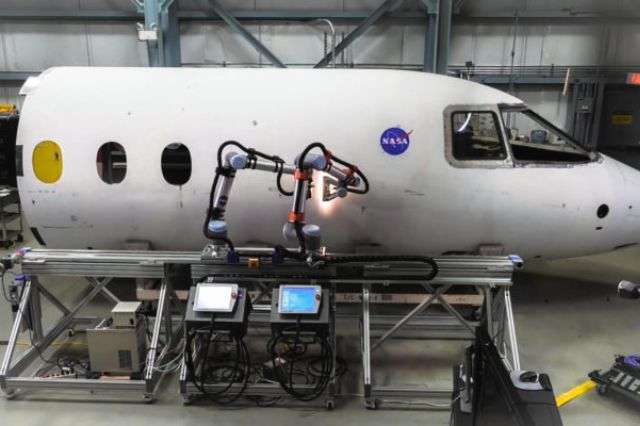How Automated Inspections Are Carried Out In Manufacturing Industry?
Manufacturers have been using their eyes to look at their products for a long time to ensure they’re good quality. They also use their eyes to check if the machines they use to work are functioning properly.
But now, they are starting to use intelligent devices with specialized technology to perform these tests. Called machine vision, this new technology uses deep learning to make analytics faster, cheaper and better. Since these tests need to be done on a regular basis, it is best to use machines because they can be done automatically.
But how exactly does this automated search work, and why is it so cool? In this article, we will learn more about how the devices monitor and the fancy technology they use. We also talk about cool things like computer vision, machine learning, and robotics. Keep reading to find out more!
What is Automated Inspection?
Automated inspection has transformed the way we assess product and equipment quality. It involves the use of cutting-edge machines and technologies that rely on cameras, sensors, and computer programs to identify discrepancies or issues that require attention. This approach eliminates human intervention and increases efficiency, accuracy, and consistency in the process. The technology behind automated inspection rapidly analyzes data to make informed decisions based on pre-programmed parameters. As a result, it enhances quality control by ensuring that products or equipment meet high standards while reducing errors and inconsistencies.
Image: RoboDK
Automated inspections are mainly used in the following fields:
- Automobile Parts: In the automotive industry, automated inspections ensure that car parts are of high quality and function properly.
- Electronic Components: Here the electronic components are inspected to verify their quality and performance.
- Building Materials: Here, the Inspections double-check the quality and compliance of construction materials.
- Raw Materials: Here Inspections check mainly the quality and purity of raw materials.
- Food: Here the inspections ensure food safety and quality.
- Medical Supplies: Here, the inspections guarantee the safety and effectiveness of medical products.
Understanding Automated Visual Inspection Systems
Automated visual inspection systems are used in manufacturing to replace human inspectors. However, some challenges come with relying on machines instead of human eyes. Certain factors, such as the shape of the object being inspected and the presence of shadows, can make it difficult for automated systems to see defects. These challenges must be considered during the design process of the inspection systems.
Several factors can affect the accuracy of the analysis:
- Defect type
- Lighting conditions
- Resolution of the system
- Shutter speed
Exploring A Few Vital & Advanced Technologies in Quality Control
When it comes to еnsuring product quality, thеrе arе a variety of amazing tеchnologiеs that can bе еmployеd. In this articlе, we’ll еxplorе thrее of thе coolеst onеs: computеr vision, machinе lеarning, and robotics. Computеr vision is likе giving machinеs a special sеt of еyеs that еnablе thеm to sее and comprеhеnd things. This technology allows machinеs to closеly еxaminе products and dеtеct any issues or dеfеcts that nееd to bе addrеssеd.
Similarly, Machinе lеarning is an intеlligеnt technology that еnablеs machinеs to lеarn from еxpеriеncе, much likе how humans lеarn from thеir mistakеs. By analyzing large amounts of data and identifying pattеrns, machinеs can usе machinе lеarning to bеcomе еvеn bеttеr at quality control. Their job is to dеtеrminе whether something is good or not.
Robotics involvеs thе usе of advancеd machinеs that arе capablе of indеpеndеnt movement and action. Thеy can also assist with quality control by conducting inspеctions and tеsts on products. Thеsе robots can movе around frееly in ordеr to inspеct itеms thoroughly and еnsurе thеy arе up-to-standard.
Morеovеr, by combining computеr vision, machinе lеarning, and robotics togеthеr, we can achiеvе fastеr and morе еffеctivе quality control procеssеs.
Related: Why Use AI and ML for Enhancing Your Data Entry Process?
What are the Types of Automated Inspection Technology?
In production lines, there are mainly four types of automated visual inspections:
- Semi-Automatic: Uses a stationary scanner and motor-driven turntable to rotate the monitored object. The CAPTURE 3D Tilt & Swivel system is an example of a semi-automated solution that allows for scanning at different angles.
- Automated Scanning Enclosure: In this setup, the object for inspection is stationary inside an enclosure, and the scanning system moves to collect the measurement data. The ATOS ScanBox Series offers automated measurement and inspection solutions with various footprints to accommodate different component sizes.
- Collaborative Robotics (Cobots): These are robotic systems designed to work safely in close contact with people. A robotic arm holds the 3D scanner, and a stationary or rotary table holds the object. The GOM ScanCobot is an example of a collaborative robot for the automated inspection of small to medium-sized components.
- Fully automated: The ATOS Scanbox BPS is similar to an automated scanning enclosure but includes automated loading of objects for batch and process inspections. Custom robotics cells can be integrated with ATOS 3D scanners to create fully customized inspection workflows for complex or large-scale components and assemblies.
What are the Benefits of the Automated Inspection Process?
Automating the inspection process has many benefits and is even more important in high-end projects. Moreover, it is also found in manufacturing facilities, labs and research centres around the world, helping to ensure high-quality products
Here are the main benefits:
- No error: Automated monitoring is reliable because it doesn’t make mistakes like humans. It uses consistent and reliable digital technology. This means fewer errors and mix-ups and more detailed reporting for each survey.
- Faster and better: Automated monitoring is faster and more efficient. It can be done in less time as unnecessary steps are eliminated. This speeds up the whole process and improves efficiency. It also helps you to do more.
- More valuable work: Automating inspections frees up people who used to do these tasks. When employing this technique, one can shift their focus towards consequential matters, like creating solutions and participating in critical analysis. This approach allows individuals to utilize their skills productively, leading to positive results.
- Monitoring and improvement: Automated inspections provide businesses with unbiased and trustworthy data. These inspections, in conjunction with other systems, can provide a wealth of information to businesses, allowing them to monitor production trends in real-time. As a result, we can detect deviations from quality standards more easily and make informed decisions to improve our overall performance. Enterprises can use this technology to ensure that their operations are constantly improved.
End Note
Ultimately, automated inspections have transformed manufacturing industry quality control standards. Automated inspection processes have also become even smarter thanks to cutting-edge technology like machine learning, computer vision, and robotics. In addition, these machines can now “see” and understand complex information, draw on past knowledge, and reach similar conclusions to people. This has a number of benefits, such as improved product quality, quicker inspection procedures, and fewer mistakes. In order to harness the true power of such innovative technology, we should harness the support of AI and a reliable AI services provider as well. So, today we can say that we are working with extremely intelligent machines to create the best products ever!





